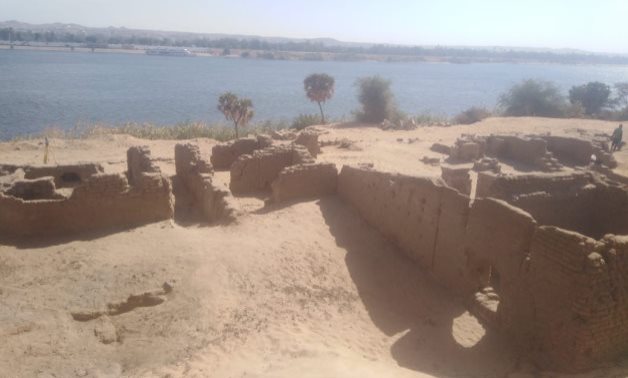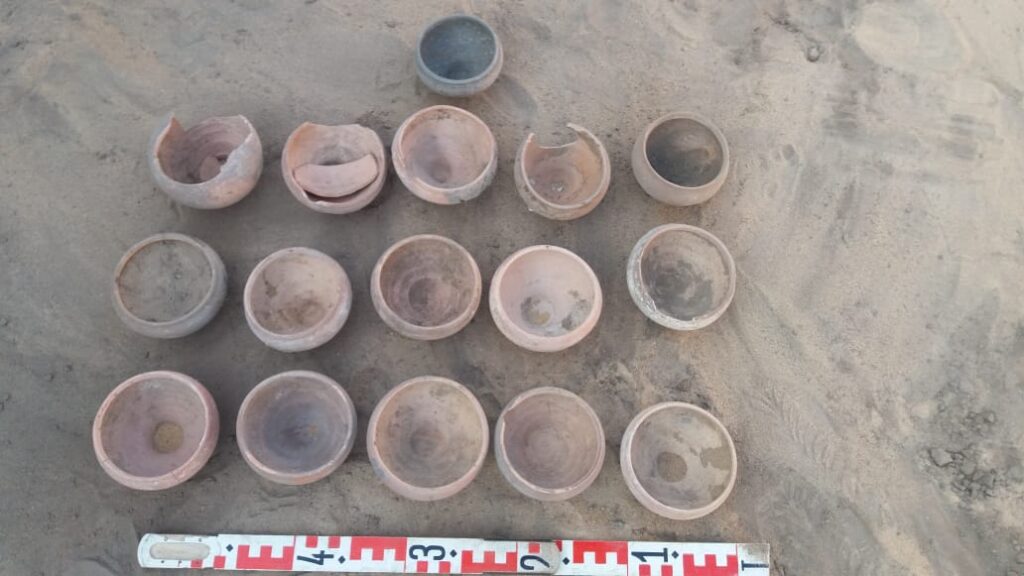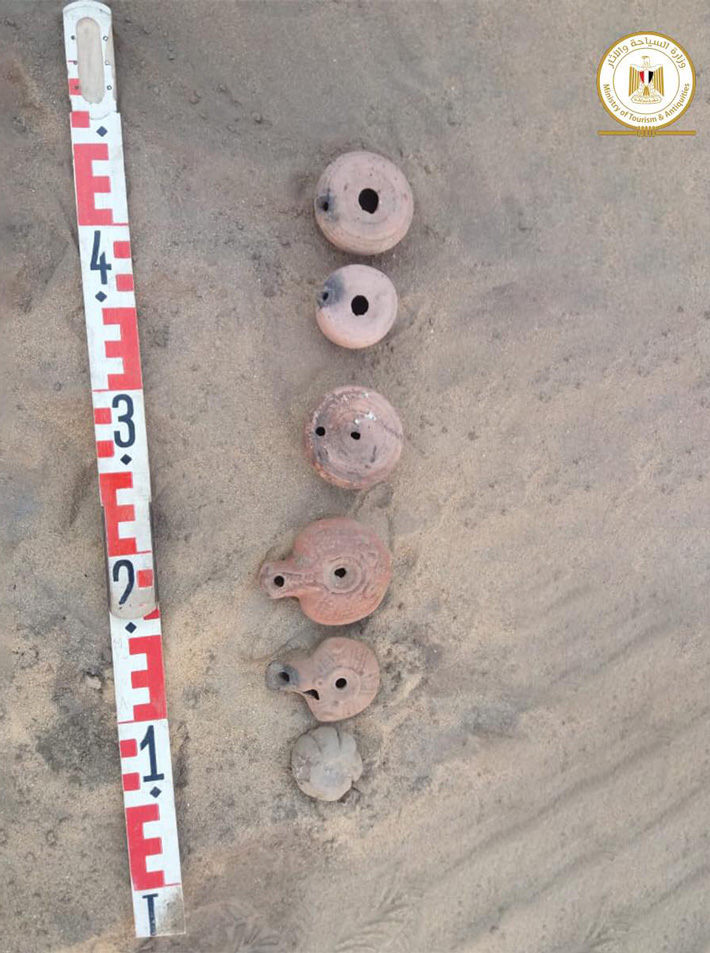Fort, Church, and Temple Remains Uncovered in Southern Egypt
Egypt Today reports that researchers from Egypt’s Supreme Council of Antiquities have discovered traces of a temple dated to the Ptolemaic dynasty, a Roman fort, and part of a Coptic-period Christian church at the Shiha Fort site in southern Egypt.

The Supreme Council of Antiquities’ Egyptian archaeological mission, operating at the Shiha fort site in Aswan Governorate, has recently discovered the remains of a Roman fort that includes the remains of a church from the early Coptic era, and the remains of a temple from the Ptolemaic period.
Inside the fort, a group of architectural elements of the Ptolemaic temple were discovered; an incomplete sandstone panel, with a model of the temple entrance and a man in the form of a Roman emperor standing next to an altar topped by a part of a deity depicted on it; in addition to four blocks of sandstone with palm fronds engraved on them.

Also, a clay vase and part of a red brick vault dating back to the Coptic era were found, as well as cartridges of Ptolemaic kings, late hieratic inscriptions and one of the Greek emperors.
The expedition has completed the work of uncovering the remains of the monastery and the church that were built on the ruins of this fort. The German archaeologist Hermann Juncker was able to previously uncover a part of the fort in the period 1920-1922 AD.

The mission revealed the extension of the remnants of the mud-brick wall surrounding the Shiha church from the western side, reaching a width of approximately 2.10 m.
On the northern side of the church, there are four rooms, a transverse hall, and an ascending staircase. On the southern side, there are ovens for burning pottery.
Stone tiles were also found on two levels located on the eastern side below the church.





